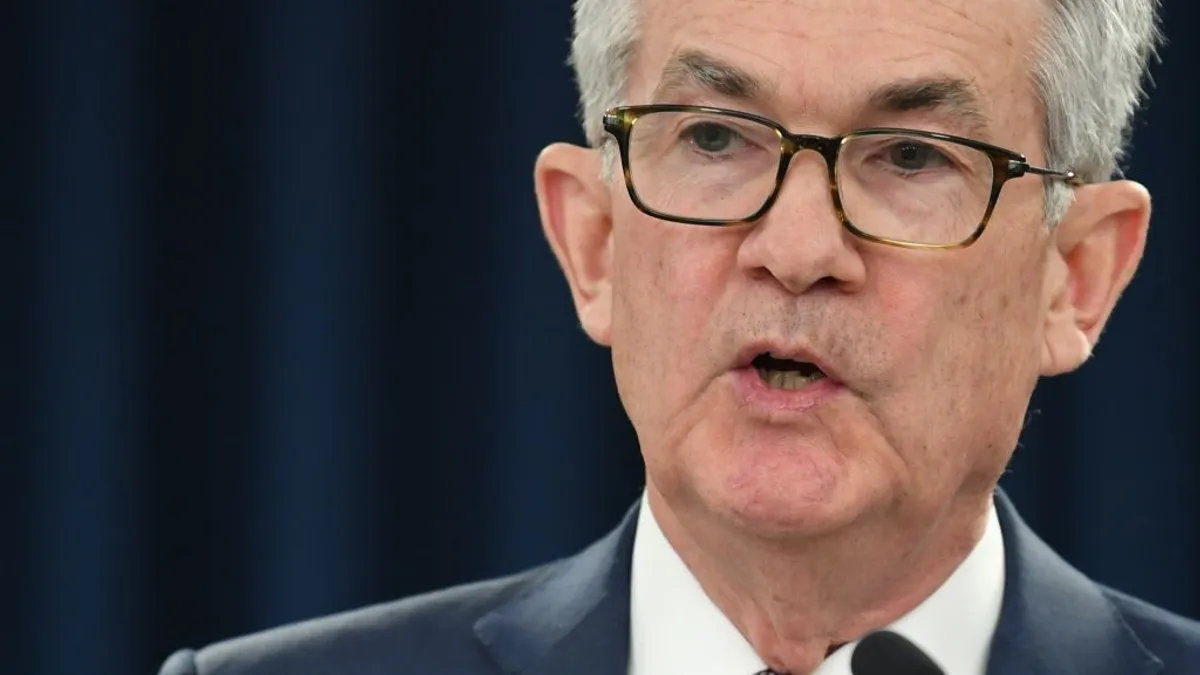Dive Brief:
- Federal Reserve Chair Jerome Powell said Tuesday that data this year has not bolstered optimism among policymakers that inflation is slowing at the steady pace needed to justify trimming interest rates from a 23-year high.
- “We've said at the FOMC [Federal Open Market Committee] that we'll need greater confidence that inflation is moving sustainably toward 2% before it would be appropriate to ease policy,” Powell said. “The recent data have clearly not given us greater confidence and instead indicate that it's likely to take longer than expected to achieve that confidence.”
- Policymakers believe monetary policy — with the federal funds rate at a range between 5.25% and 5.5% — “is well positioned to handle the risks that we face,” Powell said. “If higher inflation does persist, we can maintain the current level of restriction for as long as needed.”
Dive Insight:
Powell is just one of many central bank officials who recently has noted slowing progress this year in curbing price pressures to the Fed’s 2% target while voicing no urgency in reducing borrowing costs.
“While we have seen considerable progress in lowering inflation, the job of sustainably restoring 2% inflation is not yet done,” Fed Vice Chair Philip Jefferson said in a speech Tuesday. “If incoming data suggest that inflation is more persistent than I currently expect it to be, it will be appropriate to hold in place the current restrictive stance of policy for longer.”
The consumer price index in March rose more than forecast for the third straight month. Big gains in transportation and shelter prices helped push up the CPI 0.4% in March and 3.5% on a 12-month basis, the Bureau of Labor Statistics said on April 10.
Also, the core personal consumption expenditures price index, the Fed’s preferred inflation measure, “is estimated to have been little changed in March over February, at 2.8%, and the three- and six-month measures of inflation are actually above that level,” Powell said. Core PCE excludes volatile food and energy prices.
“While inflation metrics have moderated significantly from the 40-year peak in June 2022, the pace of improvement has stalled out the last few months,” Ginger Chambless, head of research for commercial banking at JPMorgan Chase, said Monday in a client note. “This is calling into question whether it will be appropriate for the Fed to ease policy rates as much as it has projected — 75 basis points — this year.”
Along with persistent inflation, the economy shows signs of steady growth and robust labor demand, Jefferson said. Employers this year have added a monthly average of 276,000 jobs, Jefferson noted.
Gross domestic product expanded 3.4% during the fourth quarter last year and Q1 growth will probably “slow down but remain solid as indicated by the solid growth in retail sales in March and February,” he said.
Retail sales rose more than expected in March as the solid job market, rising real wages and the prospect of steady economic growth prompted consumers to flex their buying power. The value of retail purchases increased 0.7% in March from February, the Commerce Department said Monday. Sales for January and February were also revised upward.
After the central bank said Tuesday that industrial production rose a healthy 0.4% last month, the Atlanta Fed upgraded its estimate for the annualized rate in first quarter GDP growth to 2.9% from 2.8%. Production in utilities, mines and factories rose 0.4% in February as well.
Higher-than-expected inflation data this year has prompted traders and economists to reduce their predictions of the number of quarter-point interest rate cuts by the central bank this year from as many as six to three or less.
Traders in interest rate futures on Tuesday saw 55% odds that the Fed after a two-day policy meeting on July 31 will hold the benchmark interest rate at the current range, compared with 44% odds on Friday, according to the CME FedWatch Tool.
“We’re seeing inflation come down a little bit slower than expected,” New York Fed President John Williams said Monday, adding “I don’t see this as a game changer.”
The current level in the federal funds rate is effective at easing price pressures, according to Williams, who serves as vice chair of the FOMC. “Monetary policy is working at the rates that we have now.”
“It’s a bumpy road on the inflation front and we’ll just have to figure out how to adjust policy as needed to achieve our goals” of stable prices and maximum employment, Williams said in a Bloomberg podcast.












